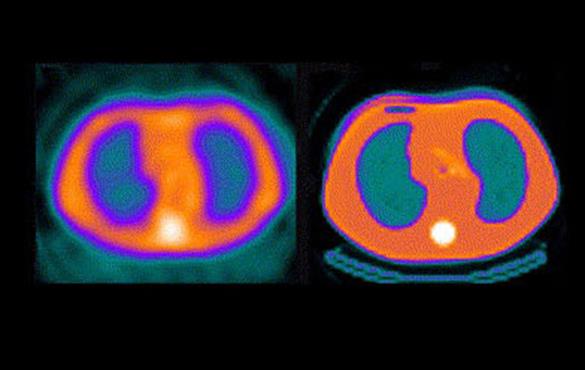Improving the imaging for coronary artery disease, America’s No. 1 killer
Imaging scientists at WashU are working to develop a new method that will likely improve patient outcomes in coronary artery disease

New method would likely improve patient outcomes in coronary artery disease.
Coronary artery disease, the most common type of heart disease, is the leading cause of death for both men and women in the United States. Imaging scientists at Washington University in St. Louis are working to develop a new imaging method that will likely improve patient outcomes and public health.
Abhinav Jha, assistant professor of biomedical engineering in the School of Engineering & Applied Science and of radiology in the School of Medicine, has received a two-year, $430,000 Trailblazer Award from the National Institutes of Health's National Institute of Biomedical Imaging and Bioengineering (NIBIB). The Trailblazer Awards allow new and early-stage investigators to pursue research programs of high interest to the NIBIB that integrate engineering and the physical sciences with the life and behavioral sciences. Jha will collaborate with Richard LaForest, professor of radiology, and Thomas Schindler, associate professor of radiology in nuclear medicine, both at the School of Medicine.
One of the most common methods that clinicians use to diagnose coronary artery disease is Single Photon Emission Computer Tomography (SPECT), a noninvasive imaging test that uses radioactive tracers in the blood to produce pictures of the heart. The radioactive tracers sit inside the myocardium muscle and emit photons, units of electromagnetic energy, which pass through the body. But the photons can get absorbed or scattered in the ribs and lungs, creating a false image. Thus, clinicians use a CT scan of the upper body to correct for those artifacts, referred to as attenuation and scatter compensation. But the CT scan presents its own risks, including exposure to additional radiation, increased time to diagnosis, increased cost, and the risk of misaligning the results of both tests, which can lead to false positives. In addition, typically these CT scans are performed with combined SPECT/CT systems, but a large number of SPECT scanners do not have the CT modality, Jha said.
Jha and his collaborators plan to develop a new method for attenuation and scatter compensation using only the data from the SPECT, eliminating the need for a CT scan.
"In SPECT, we have photons that come in straight and photons that scatter, and the scattered photons are primarily responsible for the attenuation and scatter artifacts," Jha said. "We thus want to model the physics that lead to these scattered photons to estimate the attenuation map."
Jha and his collaborators will validate these methods using a combination of computational, instrumentation-based and clinical studies, specifically on the task of myocardial perfusion defect detection.




